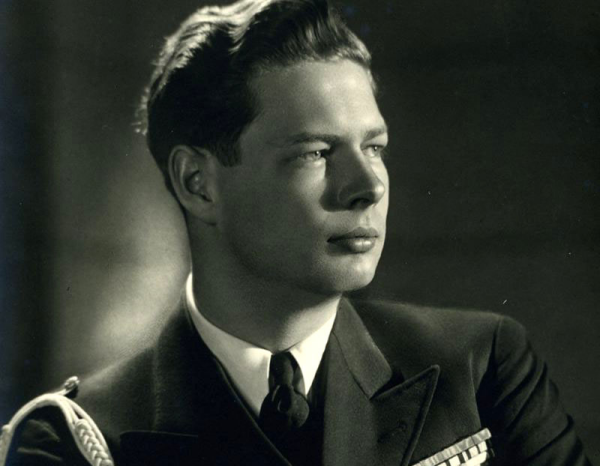 |
| King Michael of Romania, ca. 1947 (Wikimedia Commons) |
LONDON, Nov. 1 — The only reigning monarch behind Europe’s iron curtain, King Michael of Romania [1], is flying to London to be a guest at the wedding of Princess Elizabeth and Lieutenant Philip Mountbatten.
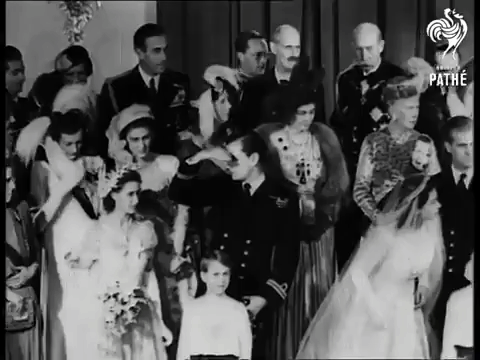
This was announced Friday. Two other European sovereigns so far have accepted invitations to be present. They are the kings of Norway [2] and Denmark [3]. Queens of Greece [4] and Denmark [5] will also be present. Princess Juliana [6], who recently assumed office as regent of the Netherlands, while her mother, Queen Wilhelmina [7], is resting to restore her health, will go to London with her husband, Prince Bernhard [8].
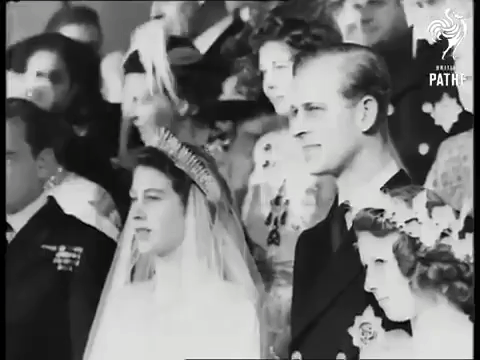
In addition, there will be several members of royal families of countries which are no longer monarchies — among them ex-King Peter [9] and Queen Alexandra [10] of Yugoslavia and Prince Charles of Belgium [11].
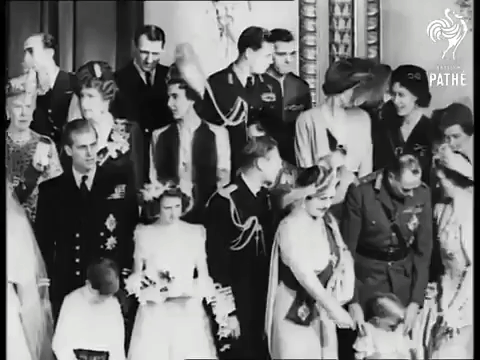
The Crown Prince [12] and Princess of Sweden [13] will attend, presumably representing aged King Gustav [14]. The sister of Lieutenant Mountbatten’s mother, Princess Andrew of Battenberg [15] and also, a great-granddaughter of Queen Victoria, is closely related to Princess Elizabeth. She is a daughter of the first Marchioness of Milford Haven [16] and was Lady Louise Mountbatten when she married the crown prince in 1923.
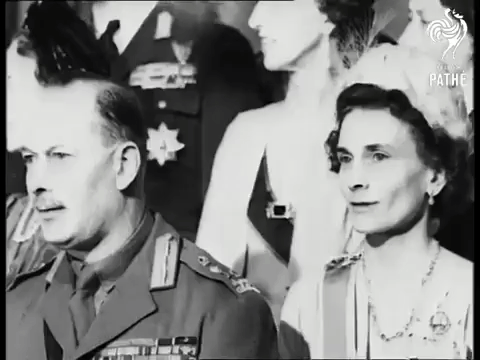
During their stay in London, King Michael will probably occupy the lavish royal suite at the Romanian legation which was furnished for King Carol [17] when he visited London in 1939. Princess Juliana and Prince Bernhard will be guests of the Duke and Duchess of Gloucester [18] at St. James’s Palace. The Crown Prince and Princess of Sweden will probably stay at Kensington Palace, where Lieutenant Mountbatten’s mother is now living.
NOTES
1. King Michael of Romania (born 1921) was in the final days of his reign as Romania’s monarch at the time of this wedding. He was forced to abdicate at gunpoint on December 30, 1947. He later revealed that the British ambassador to Romania had tried to convince him to seek asylum in London during the wedding festivities — advice he didn’t follow. Less than a week after his abdication, he was forced to leave Romania. He did not return until 1990.
This British royal wedding was important to Michael for other, more personal reasons: he met his future wife, Princess Anne of Bourbon-Parma at Claridge’s in London during the festivities. They were engaged in December 1947, shortly before he returned to Romania and was deposed. They married in Athens (home of his mother, who was a Greek princess) in June 1948.
Sadly, this week the press has reported that the elderly former king, who recently turned 96, is on his deathbed at his home.
2. King Haakon VII of Norway (1872-1957) had been on the Norwegian throne for 42 years at the time of this wedding. He was a widower — his wife, Queen Maud, had died in 1938 — but he was surrounded by his son and daughter-in-law, Crown Prince Olav and Crown Princess Martha, and his three grandchildren, Ragnhild, Astrid, and Harald. The Norwegian public had recently purchased a new royal yacht for his use, the Norge.
3. King Frederik IX of Denmark (1899-1972) had only been Denmark’s king for a few months at the time of this wedding; he succeeded his father in April 1947. He was happily married to Princess Ingrid of Sweden, and the couple had three young daughters: Margrethe, Benedikte, and Anne-Marie, who was a little over a year old. At this point, Frederik’s heir was his younger brother, Prince Knud. In a few years, the succession laws in Denmark were changed, and Margrethe was named crown princess.
4. Queen Friederike of the Hellenes (1917-1981) was the wife of Greece’s new king, Paul, who had succeeded to the throne in April 1947. Political questions about the precarious Greek monarchy had been a bit of a problem for the groom; Lieutenant Philip Mountbatten was born Prince Philip of Greece and Denmark, and he was King Paul’s first cousin. Philip had renounced his Greek citizenship and titles, becoming a naturalized Brit shortly before the wedding.
King Paul was too ill to attend this wedding, so Queen Friederike came alone on his behalf. She and Winston Churchill apparently had a bit of a dust-up during the festivities when he noted that her grandfather was Kaiser Wilhelm II. She allegedly reminded him that her great-great-grandmother was Queen Victoria.
5. Queen Ingrid of Denmark (1910-2000) had only been Denmark’s queen consort for a few months in November 1947. She had given birth to her last child, Princess Anne-Marie, in August 1946. Her father, the Crown Prince of Sweden, was also in attendance at this wedding, along with her stepmother (who was an aunt of the groom).
6. Princess Juliana of the Netherlands (1909-2004) was the heir to the Dutch throne at the time of this wedding. She had been serving as the country’s regent since October 1947, a role she continued until December. She had also recently given birth to her fourth daughter, Princess Marijke (later known was Princess Christina), who had been born nearly blind. Princess Juliana’s mother, Queen Wilhelmina, reportedly wanted to abdicate in favor of her daughter at this point, but Juliana apparently convinced her mother to stay on, partly so that she could celebrate her Diamond Jubilee in 1950. Wilhelmina’s health didn’t permit her to reach this milestone, though, and she abdicated in September 1948, making her daughter Queen Juliana.
7. Queen Wilhelmina of the Netherlands (1880-1962) was still Queen of the Netherlands in November 1947, but her increasingly bad health meant that her daughter, Princess Juliana, was acting as her regent. Wilhelmina abdicated less than a year later and lived out the rest of her life at Het Loo Palace.
8. Prince Bernhard of the Netherlands (1911-2004) was the husband of Princess Juliana, who was heir to the Dutch throne (and regent) at the time of this wedding. A few weeks before the wedding, the couple had baptized their youngest daughter, Princess Marijke (Christina); her godparents included Winston Churchill and Princess Anne of Bourbon-Parma, both of whom also attended this wedding.
Marijke had been born nearly blind, because Juliana had contracted rubella during her pregnancy. A few months after this wedding, Bernhard introduced his wife to Greet Hofmans, a faith healer who claimed to be able to treat the baby’s eyes. The relationship with Hofmans later soured and divided the couple, escalating in the 1950s into what the Dutch refer to as the “Hofmans Affair.”
9. King Peter II of Yugoslavia (1923-1970), the exiled former king of Yugoslavia, had lost his throne in November 1945. He had been living in London since 1941, following the Axis invasion of his country. His only son, Alexander, was born in Claridge’s Hotel. Peter and his family were living, rather unhappily, in European exile at the time of this wedding.
10. Queen Alexandra of Yugoslavia (1921-1993) never lived in the country where her husband had reigned as king. In 1942, when she was still Princess Alexandra of Greece and Denmark, she met King Peter in London. Surrounded by royals, they married at the Yugoslavian Embassy in London in 1944. Although the couple had a son, Alexander, their marriage was extremely troubled. The two nearly divorced in the 1950s, and Alexandra attempted suicide more than once.
11. Prince Charles of Belgium (1903-1983) was serving as prince regent for his brother, King Leopold III of the Belgians, in November 1947. Charles held the position from 1944 until 1950, between the end of Belgium’s German occupation and King Leopold’s return from exile. As regent, Charles was a part of the post-war economic restoration of the country. Belgium joined the United Nations during his regency; a few months after this wedding, the country also allowed women to vote for the first time.
12. Crown Prince Gustaf Adolf of Sweden (1882-1973) was the heir to the Swedish throne at the time of this wedding. Three years after this wedding, following the death of his father, he became King Gustaf VI Adolf. Gustaf Adolf was very familiar with Britain, having married first Princess Margaret of Connaught, a niece of King Edward VII, and then Lady Louise Mountbatten (the aunt of the groom at this wedding).
Not long before this wedding, Gustaf Adolf had suffered serious personal tragedy. In January 1947, his eldest son, also named Gustaf Adolf (but known as Edmund), died in a plane crash. Edmund’s infant son, Carl Gustaf, became his grandfather’s heir.
13. Crown Princess Louise of Sweden (1889-1965) was Lady Louise Mountbatten before she married Crown Prince Gustaf Adolf, heir to the Swedish throne, in 1923. Louise’s elder sister was Princess Alice, mother of Prince Philip, the groom at this wedding. Louise became Queen Louise of Sweden three years after the wedding.
14. King Gustaf V of Sweden (1858-1950) had been King of Sweden for forty years at the time of this wedding. His heirs were his son, Crown Prince Gustaf Adolf (who was 65 years old), and his great-grandson, Prince Carl Gustaf (who was one year old).
15. Princess Andrew of Greece and Denmark (1885-1969) was the mother of the groom at this wedding. Born Princess Alice of Battenberg, she married into the Greek royal family in 1903. She led a fascinating and complicated life, which was made even more complicated by her mental health and the precarious state of the Greek monarchy. In the spring of 1947, she moved from Athens to London to prepare for her son’s engagement and wedding. She offered him one of her own wedding presents, a diamond and aquamarine tiara given to her by Emperor Nicholas II and Empress Alexandra of Russia, to use to make an engagement ring and a bracelet for his new bride. Two years after the wedding, she founded an order of Greek orthodox nuns, the Christian Sisterhood of Martha and Mary.
16. Victoria, Dowager Marchioness of Milford Haven (1863-1950) was the grandmother of the groom at this wedding. Born a Princess of Hesse and by Rhine, she was a granddaughter of Queen Victoria. Her husband, Prince Louis of Battenberg, renounced his German titles during World War I; in turn, he was granted the marquessate of Milford Haven by King George V. She settled permanently in England, living in a grace and favour apartment in Kensington Palace.
17. King Carol II of Romania (1893-1953) was the former King of Romania in 1947. He was the father of King Michael, who had succeeded him after his forced abdication in 1940. He lived in exile in Mexico and Portugal and unsuccessfully explored options that would allow him to reclaim the throne. In the summer of 1947, he had finally married his longtime mistress, Magda Lupescu, in a hotel in Rio de Janeiro.
18. Prince Henry, Duke of Gloucester (1900-1974) and Princess Alice, Duchess of Gloucester (1901-2004) were the bride’s uncle and aunt. At the time of this wedding, they had recently returned from Australia, where Henry had served a two-year term as the country’s Governor-General. In November 1947, they had two young children, five-year-old Prince William (who served as a page boy at the wedding) and three-year-old Prince Richard.
Leave a Reply